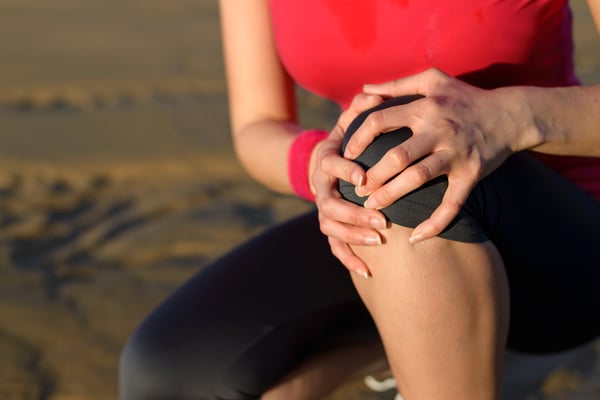A new ray of hope for people with osteoarthritis

Anna was surprised when her family doctor told her that she wouldn’t have to give up Tai Chi.
At 57 years old, she considered herself in good health. She was physically active and practiced Tai Chi with friends two or three times per week.
Then she slipped on ice, fell, and the knee pain she experienced as a result didn’t fully resolve as expected. She grew worried, so she went to see a healthcare professional.
X-rays showed joint cartilage changes. She wondered if Tai Chi and physical exercise were bad for her joints and began to fear she wouldn’t be able to practice Tai Chi with her friends anymore.
Calming the body’s protective mechanisms
The medical professional Anna consulted saw the situation differently, knowing there was so much variation in knee pain and function regardless of X-ray results.
Reviewing the most recent research, he discovered a few surprising things:
- Pain is not an accurate indication of tissue health or joint changes
- Pain has as much to do with the individual’s protective systems as it does with tissue injury, inflammation or joint changes
- The protective mechanisms of the body, including the nervous systems and immune system, can change over time
This new understanding of pain and disability as it relates to osteoarthritis allowed the healthcare professional to develop a new line of thinking:
- People with osteoarthritis like Anna should receive education about pain and neuroplasticity
- Techniques that down-regulate the protective systems can create lasting improvements in function and decrease pain
- Movement, activity, and exercise programs for people with osteoarthritis should focus as much on calming the body’s protective mechanisms as they do on enabling movements that will keep joints in good health

An X-ray of hope
Factors such as advanced age, obesity, intense pain or anxiety can be predictors of ongoing pain and disability.
Anna’s medical professional knew she was afraid of what her knee pain and the results of her X-rays meant for her future, so he did his best to convince her that her X-rays would have looked exactly the same if she hadn’t had her fall. Even more important, he reminded her that she had been doing Tai Chi pain-free before it – with the same knee.
He devised a plan: Refer Anna to a physical therapist who understood osteoarthritis, pain, and the most recent research.
Together, they would review educational material about pain, then work on movements and techniques to decrease the sensitivity of her body’s protective mechanisms to get them back to where they were before her accident.
Over time, they would slowly increase the range of movements and exercises, allowing her to regain the ability to use her knee and increase weight-bearing in a way that makes the joint as healthy as possible. Her body’s protective mechanisms would learn that it is safe to move even when there are age-related joint changes.
Imagine you were in Anna’s situation. What would it take for you to believe this? Would you be willing to try a new approach and a new way of understanding the joint changes we call osteoarthritis? Research shows you’d be wise to do so.
If you have questions about osteoarthritis or knee pain, visit a Lifemark clinic near you. Our clinicians will be happy to answer your questions.
We can help you move and feel better.
Book an appointment today.